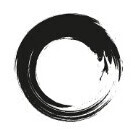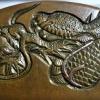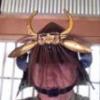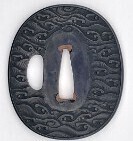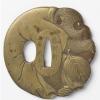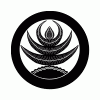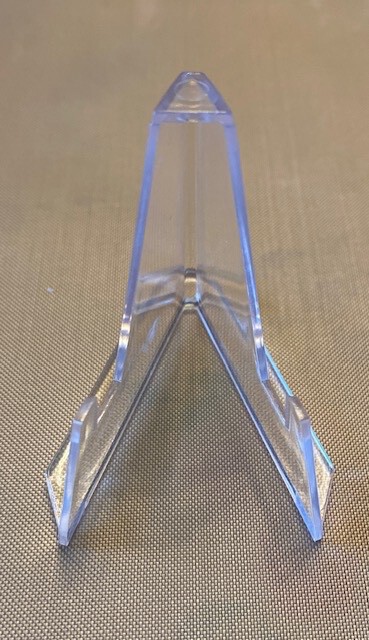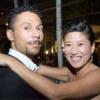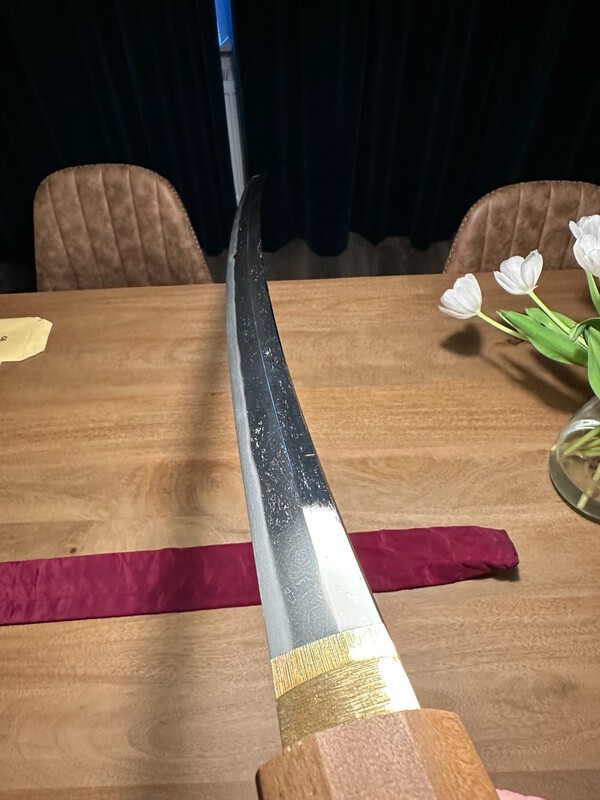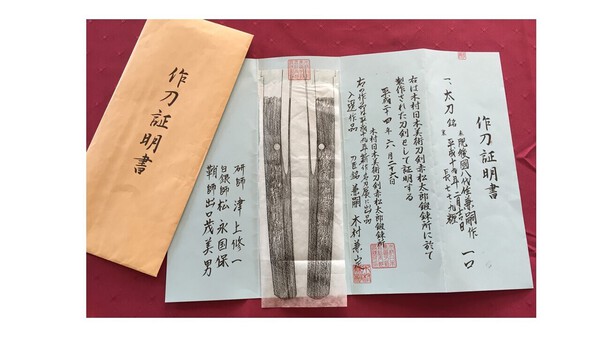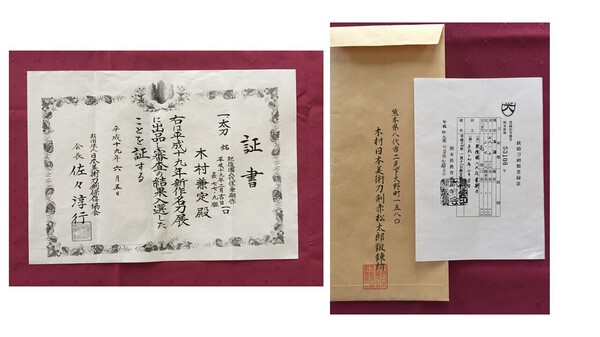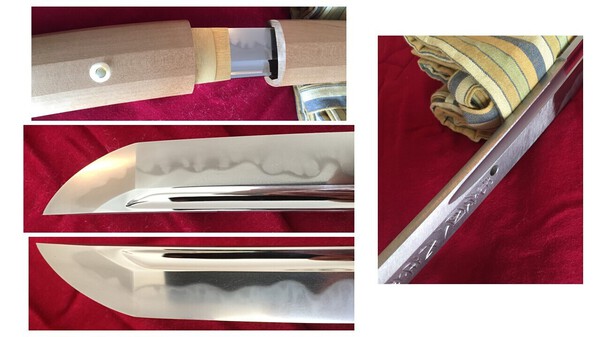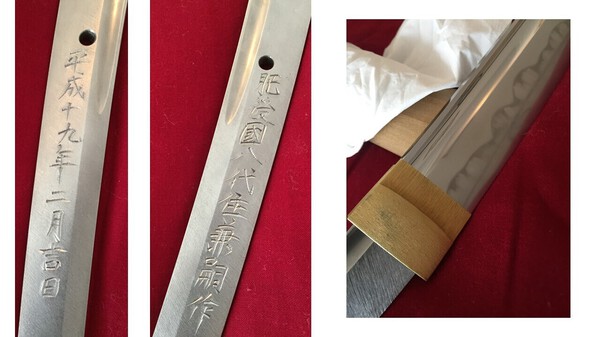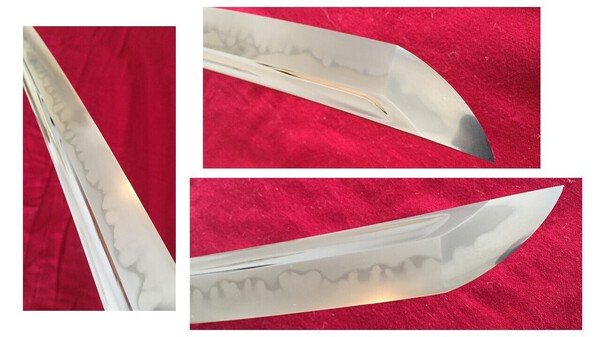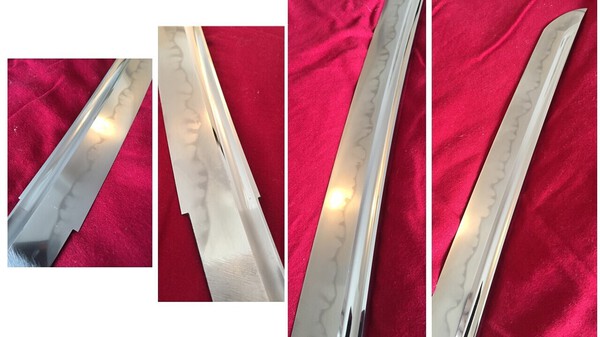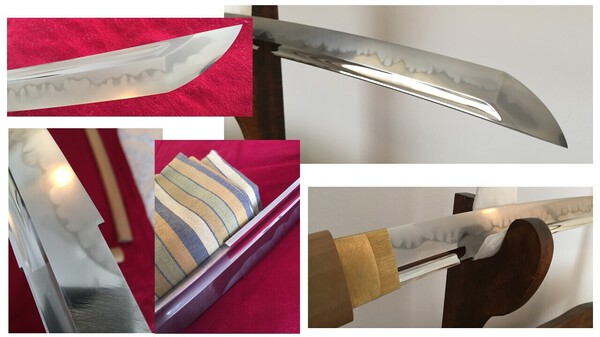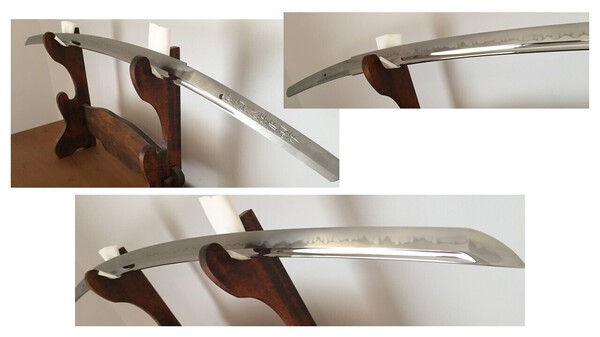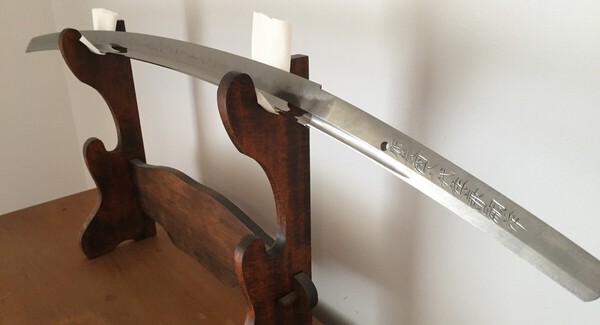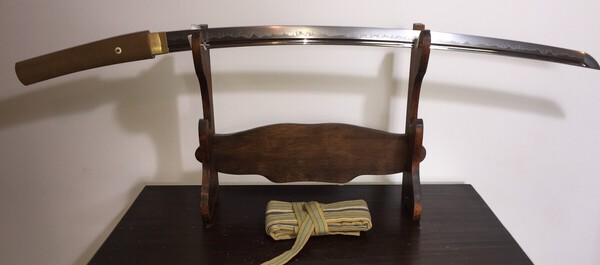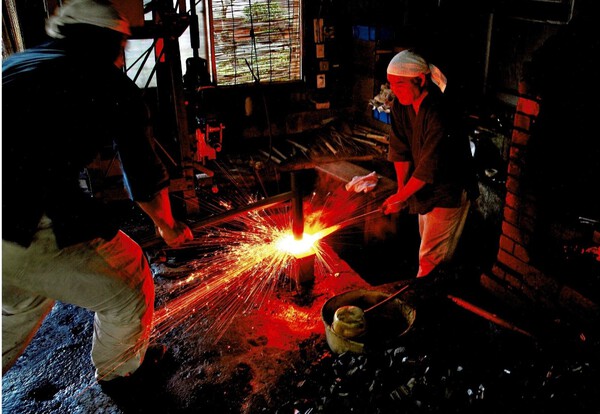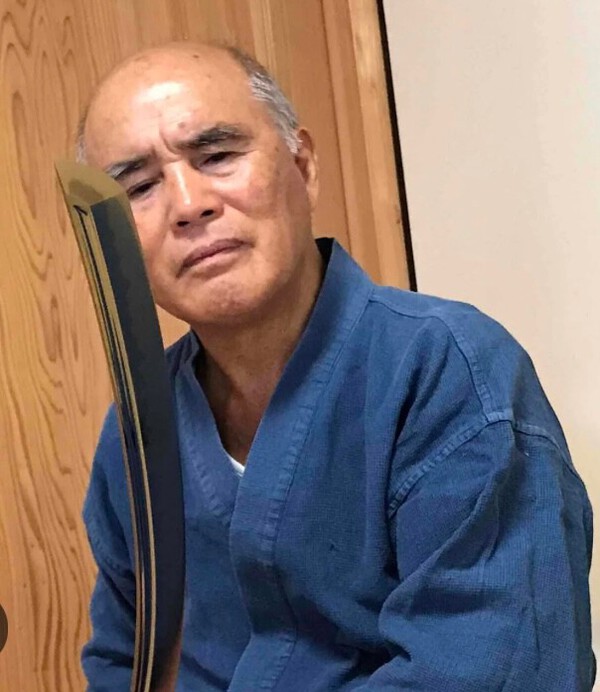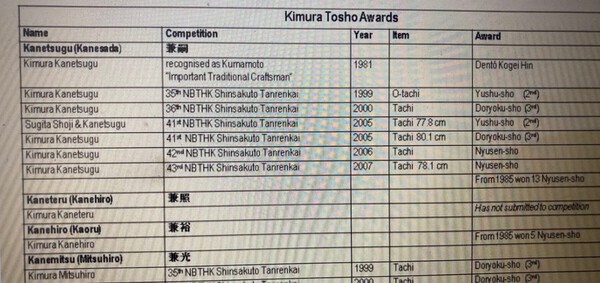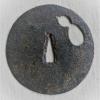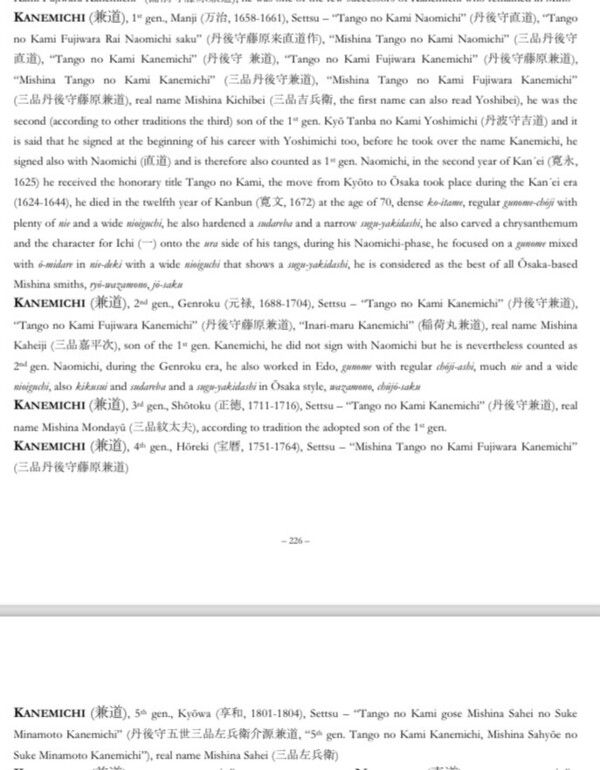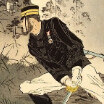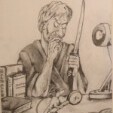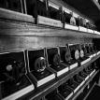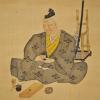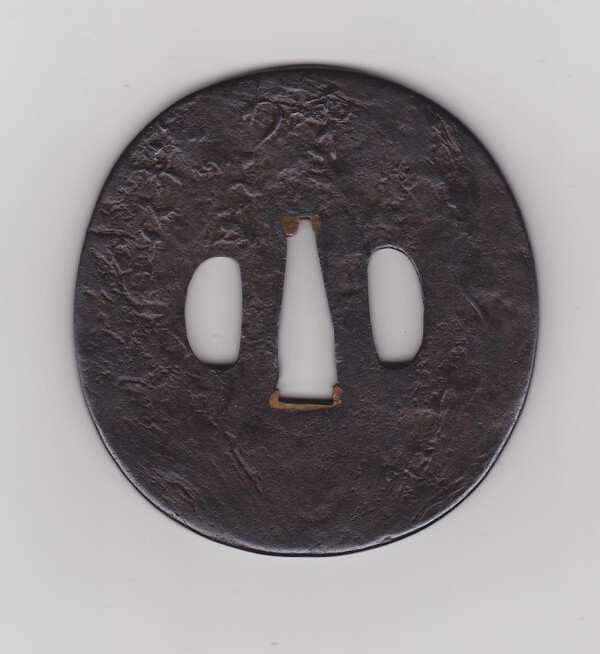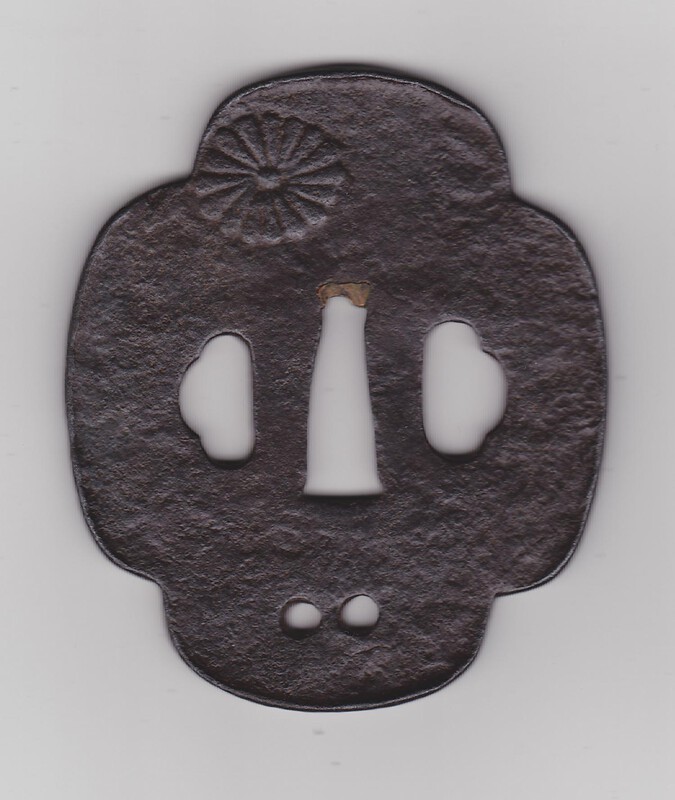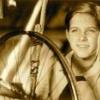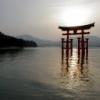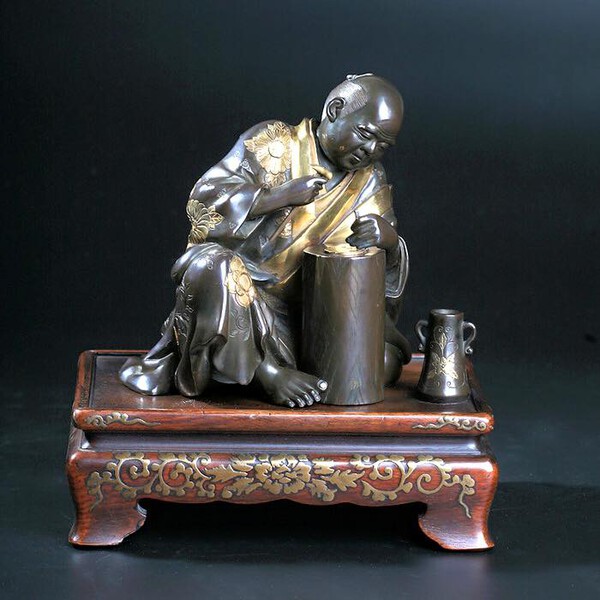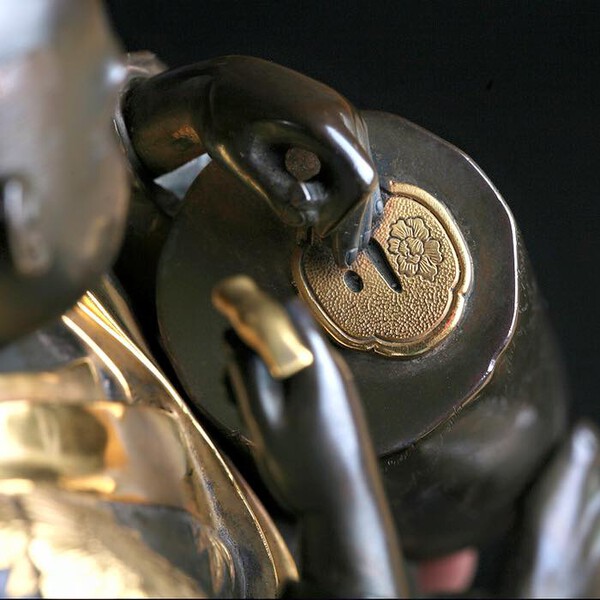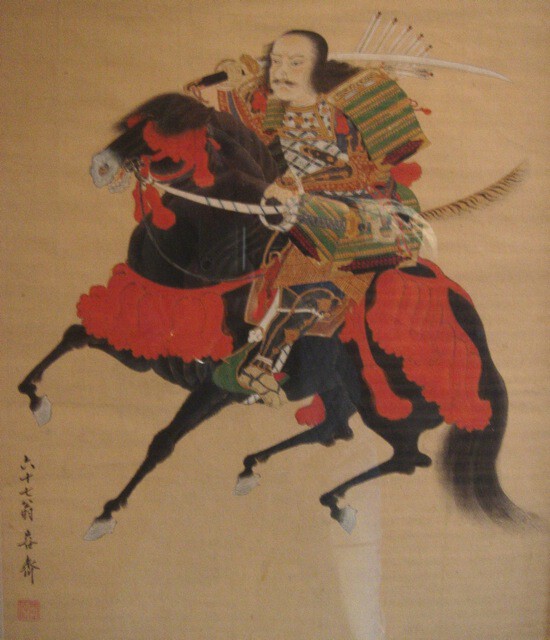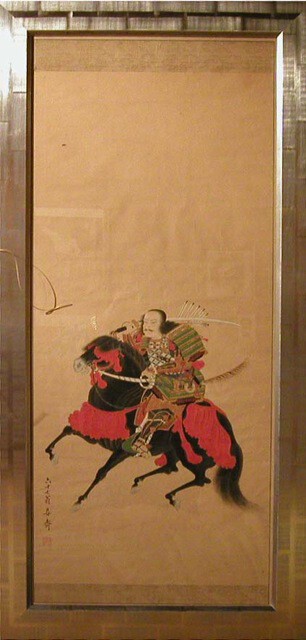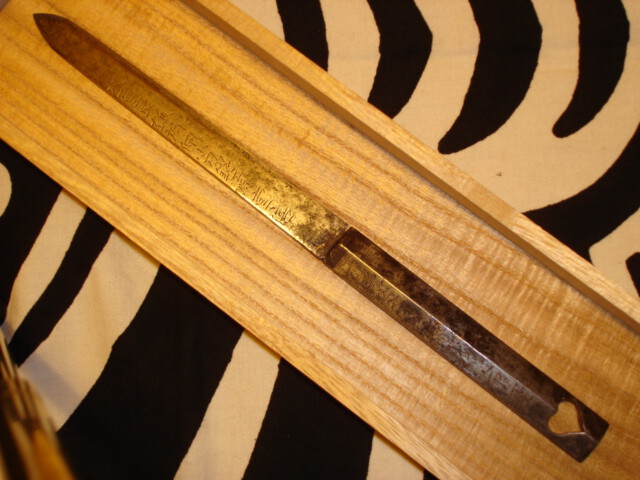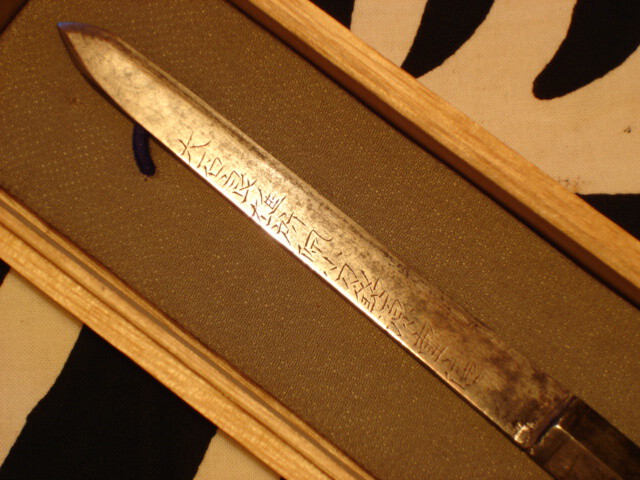Leaderboard
Popular Content
Showing content with the highest reputation on 06/03/2024 in all areas
-
6 points
-
4 points
-
Even if is Japan, tell them you are sending it back. Undisclosed flaws is the worst trick.3 points
-
3 points
-
OK, this is not meant as a criticism, so if Ian is out there reading this, I did enjoy your talk! Perhaps the word 'bloopers' was way too strong, but here are some things I noticed during the video, having watched it twice. 1. Portuguese with guns landed on Tanegashima Island in 1542 or (1543) depending on who is talking, not in 1534. 2. Tanegashima carries a strong accent in Japanese on GA, (not on 'shi') somewhat like Tane' /GA'shima, but perhaps in the West the accent is different. 3. The matchlock did not stay 'stagnant or stable' during the Edo period as massive improvements and refinements were made in their strength and weight, etc., but all within the matchlock remit. By Western standards, yes, there was no automatic evolution to other locks, this is true. Although flintlocks and wheel-locks did make occasional appearances, they were not encouraged for a number of reasons. 4. The various-sized holes in the serpentine (not all had holes) could have been used for a pin to hold the match, but generally they weren't, and as you say, loading would have been extremely dangerous with a fixed match there. 5. The longer 'wall' guns were fired from castle wall loopholes, but the fat hand-cannons of up to 30 kg were fired by hand, or rested on bales or mounds of earth on the battlefield. 6. The stocks were not made in 2 sections. There was a slit most of the way below the ramrod on many but not all guns, but above the ramrod the wood was solid. It was a kind of flexible figure of 8, the upper section gripping the barrel and the lower section gripping the ramrod. 7. From what I understand re the barrels, they were first a single sheet wrapped around a steel rod, then the kazura makibari spiral helix was performed over that. (see Sawada's book for illustration.) A double helix was better, as you say, and three twists were considered the best. (More than two were generally alluded to by the smiths as So-makibari or 'complete' helix work. 8. You mention not being able to see any writing on the gun, but there is an imprint seal of the lockmaker on the brass lockplate. The barrels were signed underneath, but you would need to remove the barrel to see if it is signed there with a place and name, and a date if you are extra lucky. 9. You mentioned they were made until the end of the 1800s, but this is true only for very rare commemorative examples. They were completely obsolete by 1870, having been superseded by foreign imports (and native versions) with improved loading and firing mechanisms and rifling during a process from about 1840 to 1860, i.e. mid-century. 10. Sugawa's book has been a stop-gap lifesaver for people in the West, but for multiple reasons it needs really serious editing.3 points
-
3 points
-
Choji oil is really just mineral oil with a bit of clove scent added to it. Tsubaki oil is camilla oil. A good quality mineral oil such as what you can buy at just about any pharmacy will work too. There is nothing that you can do yourself about the rust. That is something that this group strongly advises is done by a fully qualified sword polisher. A sword care kit will have uchiko powder in it. This really wont do anything to remove active rust, and can damage the sword further. It is strongly recommended that its use be avoided.3 points
-
3 points
-
Hey guys, A recent acquisition to collection and I felt it deserved to be shared. It's a Tokubetsu Kaga koshirae, original to the sword, resided in the private collection of an armor collector in Japan for over 50 years. Sword it was made for is a Naokatsu, made in Echigo. I would appreciate it if you could share additional information, as I have only just started studying it yesterday. Thanks2 points
-
I will say, that most if not all people here are pretty opposed to any attempts at restoration of any traditionally made Japanese sword. Even those that are rusted. There might be a very rare exception on a blade that is actually worthless (multiple fatal flaws, retempered, broken/damaged beyond repair, etc.) that may not draw the ire of the membership here, but there are too many examples of some guy trying to polish up the sword his grandpa brought back from WW2 only to ruin a 200+ year old of beautiful history in their attempts. It's happened a few times already in the very short time I've been here and on the FB nihonto groups I'm in. If you look at a polisher's page like David Hofhine, you'll see VERY rusty blades brought back to an incredible blade. So many swords are not "too far gone" like many amateurs may believe. Remember that becoming a properly trained polisher (Togishi) is a +/- 7 year commitment under the apprenticeship of a master. It's as fine of an art in many respects as the actual forging of nihonto.2 points
-
Compared to the huge knowledge base of Japanese swords, little is known about gunsmiths, and smith name lists are very rare. As to 'conversions', Roman, most appraisers and dealers are not aware of the very slight difference. There were two types of these, and at the new Nagoya 'Touken World' you can see a rack of each. The first are originally matchlocks, and there is a long shallow cutout in the right rim of the stock for the pan and lid. Conversions usually have the remnants of this long cutout, which is no longer necessary. Has yours had a later plug of wood fitted in there? Then there is the type that is to all intents using a tradionally-made matchlock stock and barrel, by the same smiths, except made solely for a percussion lock system. The cutout there is only large enough to take the nipple surround. Your pictures are rather dark, but from what I can see the latter looks the more likely candidate. It's a small difference, I agree. In my experience there are matchlock purists, who attempt to reduce a percussion gun's working parts back into a matchlock, so to such people this difference would be meaningful. History buffs might also enjoy seeing the evidence of overlap, two phases of Japanese gun history. In general though, it's horses for courses.2 points
-
2 points
-
I use these plastic stands I get inexpensively from a site called ‘WISH’. Items are direct from China in most cases. They come in different sizes, but I find the 5cm tall ones work best for almost all tsuba. No problem with scratching on iron tsuba, but if there is a concern I suppose the edges could be sanded down a bit or a small piece of cloth/silk could be used to cushion tsuba. They only cost about 50 cents a piece depending on quantity purchased. Other nice features are: they are stackable (don’t take up much room), because they are clear they don’t take away from or block viewing the tsuba, and if they get broken or lost it’s not a huge financial loss.2 points
-
2 points
-
2 points
-
Dear @Barrie B, The masks on your sword are Okame (also called Otafuku/Ofuku/Uzume) and Hyottoko (“fire man”). They are usually considered a pair (and have been for hundreds of years). Some traditions call them husband and wife. Together they symbolize good luck and jolliness. Okame is also known as the Moon Goddess who played a very important role in getting the Sun Goddess (Amaterasu) to come out of her cave and give light to the World (part of the legends of the founding of Japan). She did a bawdy dance dropping her clothes and making all the other gods laugh, so Amaterasu (the Sun Goddess) came out of her cave to see what was happening. Believe it or not, Okame was originally considered the epitome of Japanese beauty (evidentially Dale @Spartancrest doesn’t care for the ancient beauty standards in Japan… personally I'm with Dale...) Today they are very common masks that are used in lots of festivals in Japan. As I’ve said before, while this is a wakazashi, it is not necessarily a “merchant sword” (working hard to get rid of that old and misinformed stereotype…) Okame derived from Noh plays which were written by and performed for the aristocracy (Samurai, NOT merchants). While she has evolved into a more common figure, Okame’s origins were in the Bushi class. Grev @kissakai, yours is fascinating because it shows a man stuck between the two, diametrically opposed versions of a woman. Your menuki are Okame and Hannya. Okame is considered the perfect Wife (ever cheerful and supportive) whereas Hannya (on the opposite side) is considered the ultimate jealous woman. In one of the Okame legends, she was supposedly based on a real Wife who gave her own life in support of her husband. Hannya on the other hand became so jealous that she was transformed into a horned devil with a serpent’s body that became so hot that she burned her lover to death in jealousy. Your sword must have been designed by Freud, because your kashira is Hyottoko (the Husband) caught between these two extremes!2 points
-
Type (Tachi, Katana, Wakizashi, Tanto, Naginata, Other) : Katana Ubu, Suriage or O-Suriage : O-Suriage (I think) Mei : (Mumei, Signature) : Mumei Papered or not and by whom? : NBTHK Hozon Paper Era/Age : Nanbokucho to early muromachi Jidai Shirasaya, Koshirae or Bare Blade? : Shirasaya Nagasa/Blade Length : 64,5CM Sori : Uncertain see pictures Hamon Type : Jihada : Other Hataraki Visible : Flaws : Some markings on the hamon and some scratches, see images for foraging imperfections Sword Location : The Netherlands Will ship to : Everywhere Payment Methods Accepted : Bank Transfer is preferred Price and Currency : SOLD Other Info and Full Description : This Chiyozuru Katana was acquired by me in the Netherlands as a bare blade, with no mounting. I was able to mount it in a shirasaya. It has a Habaki as well. The blade has a beautiful Jigane and dates to the early Muromachi period. There are a few foraging imperfections on the blade, I have done my best to highlight these imperfections in the images. The blade is made in the Yamashiro tradition by the Chiyozuru school. Beautiful sori and hamon activity aswell.1 point
-
Its rare to come across swords for sale that were entries into the NBTHK sword making competition, this sword was entered in 2007. In hand, its a large sword, i would describe it as magnificent. The sword was bought direct from the smith by its previous owner, a well known collector here. Akamatsu Taro Kanetsugu is the current head of the Kimura Nippon Bijutsu Token of Yatsuhiro, Kyushu. His real name is Kimura Kanesada, born 1951. He is the oldest son of Kimura Kaneshige. He is recognised as a Kumamoto "important traditional craftsman". The tachi is large, it is signed and dated 2007. He made it at the age of 56. It was entered into the 2007 NBTHK Shinsakuto competition and received Nyusen-Sho. In hand, the quality stands out. Fine Ko-itame hada and a consistent hamon in Choji. See his other NBTHK results below. I'm confident any future owner will cherish this wonderful Tachi. Price is £5500 or best offer. That's a fair price for such a sword. Payment via bank transfer or paypal (buyer to cover fees). Folks are welcome to come and see the sword. Shipping likely to be with UPS, i will need to get a price for anyone interested. I am bad at photography, until i take some pictures i will use some by the previous owner. Type... Tachi Ubu.... Original condition competition blade, Mei... Higo Kuni Yatsushiro Ju Kanetsugu Saku Papered...Copy of Nyusen-sho, copy of Torokusho, and original statement/oshigata by Kanetsugu. Age..."Heisei ju ku nen ni gatsu kichi jitsu" (lucky day 2nd month 2007) Shrasaya.. With horn mekugi/mekugi ana, Comes with a bag made by the smiths wife. Total length 108cm Nagasa/blade length.. 78cm, Total length of blade and nakago is 101cm Sori.. 2.5cm Hamon.. choji Jihada...Ko-itame with Jinie Flaws...No, its a competition sword. Habaki..quality 2 piece with gold foil. Location..UK Plenty about the Akamatsu Taro smiths online. They make their own Tamahagane from Kumamoto river sand, their hada has a darkish appearance. Akamatsu Taro (japaneseswordhigotsuru.com) This is a robust tachi with finely carved Bo-hi. This sword would make one hell of an addition to any collection. Lots of information comes with this blade which is a nice bonus, ask for more details if your interested.1 point
-
Thank you guys for accepting me as a new member. I’ve read many bits and pieces from you guys board via general searches. Seems like a great group with a plethora of knowledge.1 point
-
Horrible cheap fake. It is so far away from the real thing. Sorry.1 point
-
Ha! You're right, they left off that last kanji. We've see a couple Mantetsu over the years with errors, but it's pretty rare. This is where I go to translate Zodiacal dates: Japaneseswordindex.com - Zodiac Dates, but it's Spring 1943. Do me a BIG favor and post a photo of the full serial number on the back edge of the nakago. I like to file a couple of shots of the overall rig, too, with fittings. @Kiipu @BANGBANGSAN1 point
-
The holes could be filled easily with leather repair filler, they do many various colours in many shades. You would hardly see them, used it a few times. The question is whether you should?, Don't see it as much of an issue either way.1 point
-
Okan, very beautiful! I hope the bugs are gone and the leather TSUKA ITO can be restored !1 point
-
1 point
-
Every time a blade is polished (whether to remove rust, fix a chip, or just renew the shiny surface), metal is removed from the blade. Most nihonto are more or less a sandwich of hard/soft steels with the hardened (tempered) edge in the middle on the cutting edge. The hamon is both a functional transition of this transition from soft to hard steel as well as an artistic expression of the swordsmith in their clay/tempering skills. After many polishes, an excessive polish (such as one to remove a deep chip/damage to the blade), or work on a blade with an already narrow band of hardened cutting edge, you will either run into the hamon running off of the blade to the edge (as in your case) or in the core steel coming through the hamon higher up in the blade by the shinogi ji. Both of these are considered a fatal flaw as they show a sword that is "tired" i.e. been polished too many times and doesn't retain enough of its hard/soft steel to maintain its function as it was originally in its freshly forged state. Any blade with a fatal flaw will almost never paper at a shinsa and the collectability and value of the sword goes down drastically.1 point
-
Those are the ones I have been using too. I was just getting antsy about the sharp edges and points having an impact on the copper or shakudo tsuba (iron is not an issue). What I am doing now is to use a nail file to soften the edges and points so that they don't catch on the nanako on the rim, or press into the copper. I am probably being overly cautious, but I don't want to regret damaging things later.1 point
-
1 point
-
You see this quite often with Mino-Den blades, there are Kanemoto swords with basically microns of Hamon left in the valleys.1 point
-
Hamon should be present for full length of blade and also in kissaki. If it drops off it is often because blade was badly chipped and reshaped during polish. It is a characteristic of some smiths ( I think) but not on this blade in my inexpert opinion. Run away.1 point
-
Thanks to @John C, who sent me a fully translated page from Ohmura's site, we have confirmation that the stamped numbers on RJT blades were in fact put there by the armory! We still don't have documentation that explains the stamped numbers on non-RJT blades, but this is great news, for me at least! From the page: "The sword blade stems delivered to this armory are: (1) Those with only a "star" mark that has passed the Army Material Inspection (2) A "star" and a number stamp on the stem butt (3) A "star" and an inspection mark on the stem building (4) There are various types such as those with a "star" and a small "sekiin". Items made before the designation of a swordsmith or items sold directly without delivery to the armory due to special circumstances even during the period of swordsmithing will not be marked with these inspection seals, number stamps, etc. A sword that does not have the date of manufacture cut on the back of the stem is not a sword that has been once delivered to the armory, even if it is a standard sword of the swordsmith." Noteworthy on another topic is the statement that "Items made before the designation of a swordsmith or items sold directly without delivery to the armory due to special circumstances even during the period of swordsmithing will not be marked with these inspection seals, number stamps, etc." confirming what we've been saying about RJT qualified smiths selling blades directly to the market, bypassing the arsenal, not having stamps. Edit: I just realized they stated that blades sold outside the armory will NOT have stamped numbers: "Items made before the designation of a swordsmith or items sold directly without delivery to the armory due to special circumstances even during the period of swordsmithing will not be marked with these inspection seals, number stamps," Translated page attached: About the specifications of the sword.docx1 point
-
Jacques We have had this conversation in the past my understanding has always been that being awarded a hozon paper means it is worthy of preservation. It therefore has to be in reasonable condition and without fatal flaws. Exceptions may be made if something has a valuable history. But a hozon papers says more about a blade than just the mei is authentic. Has something changed recently?1 point
-
I was very priviliged to join a sword viewing event today that featured 20 high quality swords. And I agree with others that there are levels to collecting. However not everything in my collecting dream is focused on quality. I cannot afford that way of collecting. I believe it is important to find your own way in collecting. I have realized my own ultimate preference hasn't really changed all that much. 😅 However it is important to try to understand quality, and the difference in items. I admit I often struggle with some very high level items, while with some it is easier to understand the desirability. For example perhaps my favorite sword of the day was big naoshi with Hōju attribution, it just hit me. However I understand that for example the Tokubetsu Jūyō swords were far above that one, still I cannot explain it by reason. I am just looking the list of all the wonderful swords I wrote down, and I even puzzle myself how I liked the Hōju so much. I don't think the naginata in the opening is a bad item. I feel it is just a normal sword. For my own collecting preferences it lacks the size that is very important to me, and it is of shape that I dont personally like. On the plus side it is ubu and signed.1 point
-
1 point
-
1 point
-
Wow gentlemen! Thank you for your quick responses. I appreciate details of some of the underlying factors that helped form your conclusions. I don't know if I would have ever arrived at any reasonable estimation of source or date, as you can see from my shot in the dark "Mid-Edo,Shinto" guess. Just identifying the variety of features in the Hamon was a bit mind boggling, let alone trying to determine the pattern in the Hada and Boshi. Measurements I can make, but the more nuanced determinations are quite a ways beyond me. I have to ask if the information I provided was accurate and sufficient for your evaluation, or is there additional information I could have provided. It took me the better part of a week to prepare my inquiry, reading the many great articles, especially by Markus Sesko, taking pictures, sizing pictures, orienting pictures, trying to learn at least the rudimentary terminology, etc. I have 4 additional swords that I would like to submit and want to make sure I do it properly so I don't waste your time. I will also work to find a way to provide better pictures where possible.1 point
-
What's the bloopers, Piers? Just guessing, but anything to do with these guns having regional characteristics?1 point
-
1 point
-
You can ask Polish collectors (there are a few) but generally it can be: 1. Japanese are always afraid of something and use any possible excuse to not do something because "its absolutely forbidden". Often its not. 2. For postal service you need a direct flight from Poland. As I think there are none over Russia, I don't think they exist at all. Closest country with a direct flight is probably Germany or Netherlands. Without direct flights swords are problematic. 3. FEdex and UPS can carry swords but only if a dealer has a special contract with them.1 point
-
I will just throw my one and only Okina mask tanto tsuba in, it is not that different to Tom's example except the mask and fan are on the one side with a flute on the ura - mine is not signed so impossible to attribute. I think we are all learning a great deal from this thread, great insight from George. Baz, by trying to find something about your pieces we have all gained, thanks very much.1 point
-
George you continue to amaze me with the depth and breadth of your knowledge. You continue to make significant contributions here on Nihontomessageboard.1 point
-
I have had a look around and whereas there are plenty of tsuba with noh masks, other fittings are in short supply - makes it difficult to gauge age when there is so little to judge by. https://www.worthpoint.com/worthopedia/8005-jp-samurai-sword-noh-mask-takasago-menuki https://www.catawiki.com/l/43615829-Japanese-sign-higonokami-fujiwarateruhiro-saku-kogatana-hand-fan-hanya-mask-motif-iron-copper-Japan-edo-period-1600-1868 https://www.ebay.ie/itm/Kozuka-Japan-Samurai-Hannya-mask-inlay-shakudo-sword-fitting-katana-tsuba-w-box-/183876758513 none of these are very close to your piece but you might get some clues?1 point
-
1 point
-
1 point
-
1 point
-
Yes. Just when I think I'm all about collecting Muromachi or earlier pieces (sometimes a Momoyama one, or a Kunitomo/Hazama)- A gent comes along and shows me a late Edo piece that makes me go "Wow!". I'm also a big fan of Tsuchiya Yasuchika, and he is right that the tsuba does look like his style. But he usually signed his pieces, even though sometimes in atypical places.1 point
-
1 point
-
1 point
-
You guys have some beautiful stuff. It is also great to be able to see the contrast between the "in your face mind-blowing" kinko stuff and the subdued great iron more "plain" works. Keep them coming. Brian1 point
-
1 point
-
1 point
This leaderboard is set to Johannesburg/GMT+02:00

